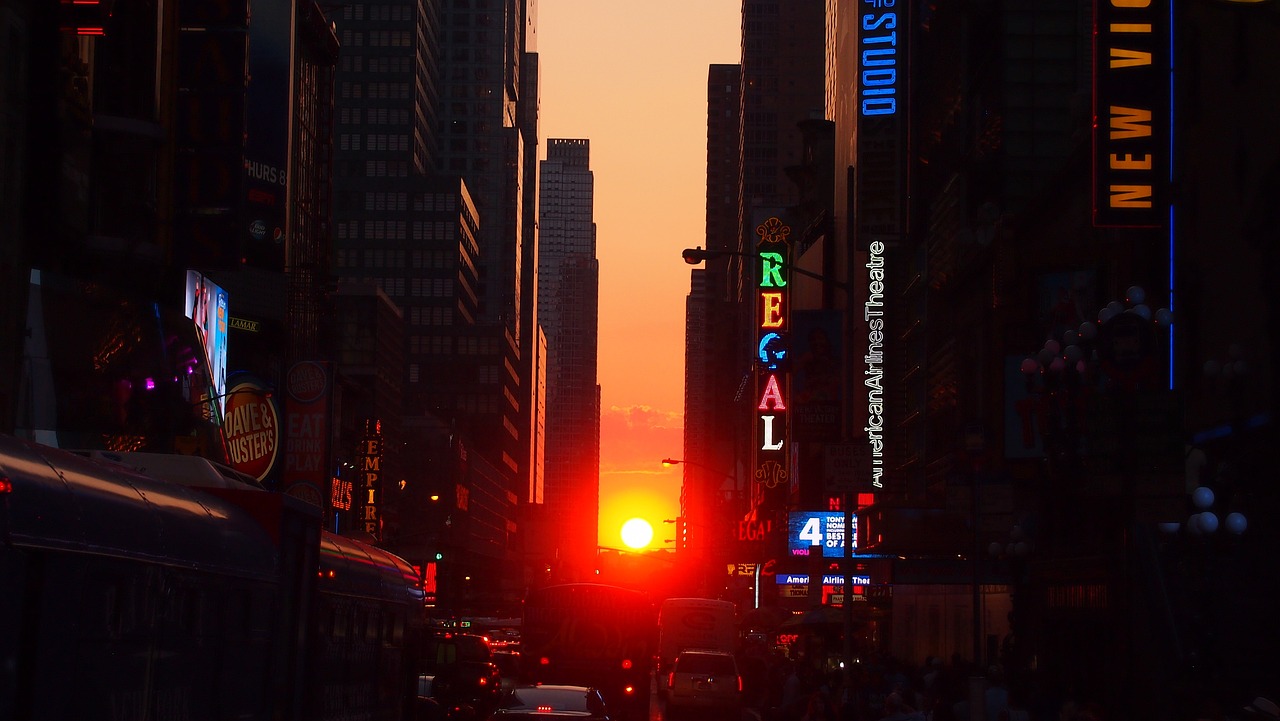 Pin
Pin Image by c from Pixabay
Not every art gallery visit is life-changing. Some feel like you’re just walking past a bunch of paintings you don’t really “get,” while pretending to look impressed. But then there are the ones that hit you. You walk in, and something shifts. You see a piece that feels like it was made just for you, even if it’s 500 years old.
That’s what the Top 10 Art Galleries in the World are about. These aren’t your typical quiet, echoey museums where the highlight is the overpriced coffee at the gift shop. These places hold the kind of energy you feel in your chest. The kind where history isn’t locked behind glass—it’s alive and loud in front of you.
Some of these galleries feel spiritual. Some feel like time machines. All of them have one thing in common: you walk out thinking differently than when you walked in.
Table of Contents
1. The Louvre (Paris, France) You Think It’s Just the Mona Lisa—It’s Not
 Pin
Pin Image by ian kelsall from Pixabay
If you think the Louvre is just about the Mona Lisa, you’re missing about 99% of what makes this place so intense. Yeah, that tiny painting is there, usually surrounded by a sweaty crowd trying to get a blurry photo—but the real magic is everywhere else.
This place used to be a royal palace, and it shows. You’re not just walking into a museum; you’re stepping into centuries of empires, wars, revolutions, and pure human genius. Ancient Egyptian tombs? Check. Sculptures older than most religions? Also check. Works by Delacroix that make your chest tighten? Yeah, those too.
It’s massive. It’s overwhelming. And it’s unforgettable. You don’t really “visit” the Louvre—you survive it. You crawl out hours later with your mind spinning, realizing how much of the world’s story has been told through color, shape, and shadow. If you’re into art even a little bit, the Louvre isn’t optional.
2. The Vatican Museums (Vatican City): Art Meets Power, and It’s Jaw-Dropping
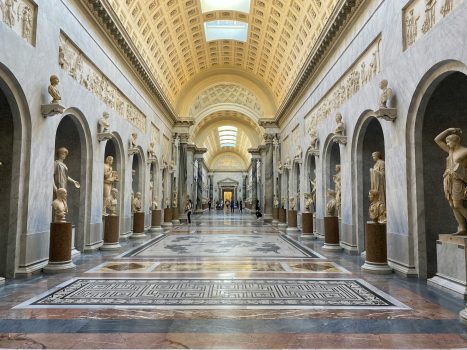 Pin
Pin Photo by Corey Buckley
Even if you’re not religious, the Vatican Museums will absolutely wreck you—in the best way. This place doesn’t just show off great art; it’s a collection of everything the Catholic Church has hoarded (and yeah, sometimes controversially) over the centuries. It’s heavy with gold, stories, and silence.
The moment you walk in, you’re hit with this weird mix of awe and unease. Statues from ancient Rome line the halls like ghosts watching you. Maps painted by hand. Tapestries taller than your house. And then there’s the Sistine Chapel. No one ever tells you just how big and overwhelming it feels to stare up at Michelangelo’s ceiling. Your neck hurts but you don’t want to look away.
This isn’t just a museum. It’s power, history, and guilt all wrapped in frescoes and marble. You leave feeling small, inspired, confused, and full of questions—and that’s what great art is supposed to do.
3. The Metropolitan Museum of Art (New York City, USA): You Could Spend Days Here and Still Miss Stuff
 Pin
Pin Image by Marek from Pixabay
The Met is the kind of place that makes you realize how short life is—because even if you lived across the street and went every weekend, you’d still be discovering new corners years later. It’s that big. But more importantly, it’s diverse in the best way.
You start with ancient armor that looks like it belongs in a fantasy novel. Then, turn a corner and boom—impressionist masterpieces that stop you in your tracks. Keep walking and you’re in a reconstructed Egyptian temple. The museum doesn’t just show you art—it drops you into entire worlds.
The coolest part? It doesn’t feel snobby. Yeah, there’s centuries of high-brow art, but it’s also got fashion, photography, even pop culture exhibits. The Met understands that art isn’t just oil paintings. It’s culture, emotion, and memory.
And if you go in the summer, don’t miss the rooftop garden. You’re standing above Central Park, drink in hand, surrounded by art. That’s a core memory right there.
4. The Uffizi Gallery (Florence, Italy): Where the Renaissance Hits You in the Face
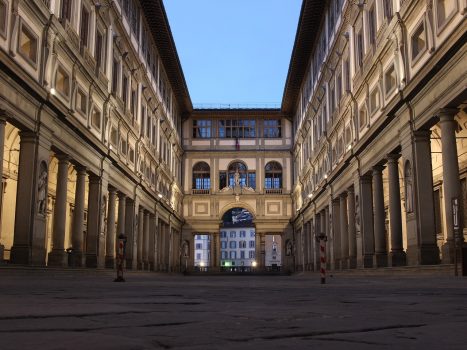 Pin
Pin Image by Dali from Pixabay
The Uffizi isn’t flashy. It’s not massive like the Louvre or modern like MoMA. But when it comes to raw, historic impact—it’s on another level. This is the heart of the Italian Renaissance. If you’ve ever seen an art history book, chances are something from the Uffizi was on the cover.
You walk in and within minutes you’re face-to-face with works by Botticelli, Michelangelo, Da Vinci, Caravaggio… it’s almost too much. “The Birth of Venus” isn’t just a painting here—it feels like an actual cultural moment frozen in time.
The building itself? Straight-up poetic. Long corridors with natural light hitting the frames just right. Marble busts staring at you like they’re judging your outfit.
The vibe is quieter than most big museums. People here are actually looking, thinking. No one’s rushing. You feel it in your chest—like you’re in the room with ghosts who created the foundation of Western art. It’s not loud, but it lingers in your memory for years.
5. The Prado Museum (Madrid, Spain): Darkness, Drama, and Pure Emotion
 Pin
Pin Photo by Coralma*, CC0, via Wikimedia Commons
The Prado is intense. It doesn’t ease you in with soft landscapes or happy portraits. It hits you with raw, emotional weight right out of the gate. This is the place where you meet Goya—not the nice early Goya, but the late, terrifying one. The kind that paints nightmares.
There’s something about Spanish art that just feels deeper. Maybe it’s the shadows, maybe it’s the religion, maybe it’s the history of violence and beauty coexisting. Either way, the Prado captures it perfectly. You’ve got Velázquez’s “Las Meninas,” which has layers within layers. You’ve got El Greco bending light and bodies in ways that feel strangely modern.
It’s not just paintings, though—it’s a mood. The kind that stays with you after you leave. The Prado doesn’t try to impress you with volume; it moves you with intensity. Some galleries make you say “wow.” This one makes you say nothing at all, because you’re still trying to process what you just saw.
6. The Tate Modern (London, UK): When Art Gets Weird—And You Like It
 Pin
Pin Photo by @mrm2t / Instagram
The Tate Modern is like that one friend who shows you something super strange and says, “Trust me.” And somehow… you do. Housed in an old power station, it already feels different the second you walk in. It’s industrial, echoey, and full of surprises.
This place leans hard into modern and contemporary art—which means it’s not afraid to get weird. Giant installations that make no sense at first. Video art that kind of makes you uncomfortable. Entire rooms dedicated to single sounds or shades of color. But weird doesn’t mean pointless. You start realizing that it’s supposed to make you feel something first, then maybe think about it later.
One moment you’re laughing at something absurd, the next you’re low-key emotional in front of a Rothko. It flips expectations on their head. If you think you “don’t get modern art,” this place might just change your mind. Or at the very least, it’ll give you stories to tell.
7. Rijksmuseum (Amsterdam, Netherlands): Where Every Painting Tells a Secret
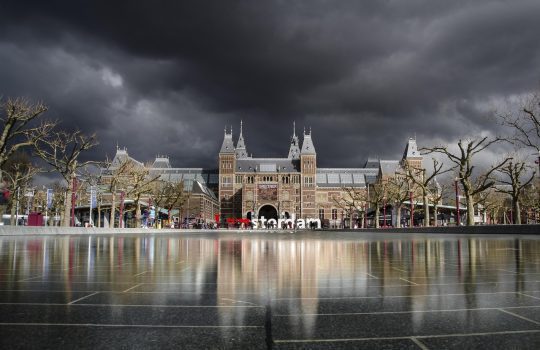 Pin
Pin Image by Rudy and Peter Skitterians from Pixabay
The Rijksmuseum doesn’t shout for attention—but once you’re in, it’s hard to leave. It has this quietly powerful vibe, like it knows the weight of what it holds and doesn’t need to prove anything.
Step into the Gallery of Honour and you’re face-to-face with Rembrandt’s “The Night Watch.” That painting alone could fill an entire room in your brain. The way the light hits the faces, the depth, the mystery—it feels like a movie frozen mid-scene. Vermeer, Frans Hals, Van Gogh—they’re all here, and their work somehow feels more alive here than in any textbook.
But it’s not just about Dutch masters. The layout, the architecture, the way the space flows—it pulls you deeper without you realizing it. You start noticing small things: the way a soldier’s hand rests on a musket, or how a woman’s eyes follow you across the frame.
The Rijksmuseum is the kind of place that makes you slow down. And sometimes, slowing down is exactly what you need to actually feel art.
8. Musée d'Orsay (Paris, France): Where Impressionism Hits Different
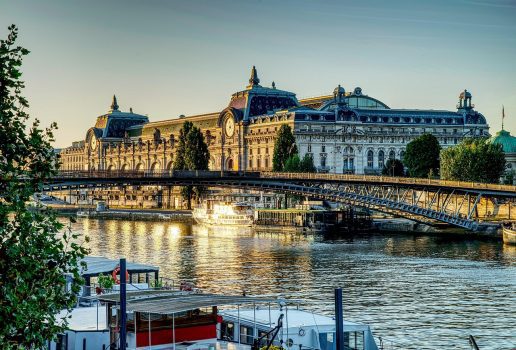 Pin
Pin Image by Jean-Philippe Fourier from Pixabay
If the Louvre is the grand, intimidating older sibling, then the Musée d’Orsay is the cooler, more approachable one who still has serious depth. It lives inside an old train station—which already makes the vibe unique—but it’s what’s inside that really sticks with you.
This is where Impressionism lives and breathes. Van Gogh, Monet, Degas, Renoir—all in one place, all glowing with that dreamy, soft light that Impressionist paintings do so well. You don’t even have to be an art person to feel moved here. The brushstrokes are messy in the most human way. You can see the artist’s energy, their frustration, their obsession.
The layout is more relaxed, less overwhelming than other major galleries. You wander, you stop, you stare for a while. No one’s rushing. Everyone looks kind of mesmerized.
And yeah, seeing “Starry Night Over the Rhône” in person? It’s a full-on emotional experience. The Musée d’Orsay doesn’t just show you art—it makes you feel like you’ve walked into the heart of someone’s memory.
9. The State Hermitage Museum (St. Petersburg, Russia): Art in a Palace That Feels Unreal
 Pin
Pin Image by Peter Rüdiger from Pixabay
The Hermitage isn’t just a museum—it’s a palace, literally. It’s so lavish and massive that sometimes you forget you’re there to see art. Gold ceilings, marble staircases, chandeliers bigger than your living room—it’s the kind of place that makes you feel like a time traveler or maybe royalty who accidentally wandered in.
And then you remember the art. It’s everywhere. Rooms and rooms of it. Da Vinci, Rembrandt, Raphael, Matisse. Over 3 million pieces in total, which is actually impossible to wrap your head around. You’d need a lifetime and then some to see it all.
The crazy part? It doesn’t feel cold or distant. It feels personal, like every room has its own story. You’re not just looking at paintings—you’re absorbing history. You’re inside it.
The Hermitage has this surreal energy. It’s beautiful, yes, but also kind of overwhelming. You leave with sore feet, a full camera roll, and the weird feeling that you just walked through five different centuries in one afternoon.
10. National Gallery (London, UK): Art Without the Ego, Right in the Heart of the City
 Pin
Pin Photo by Selim Karadayı
The National Gallery sits right in Trafalgar Square, and if you didn’t know better, you might just think it’s another nice building. But walk through its doors and boom—you’re in front of some of the most iconic paintings in history. And the best part? It’s free. Like, completely free. No entry fee, no catches. Just world-class art open to anyone who wants to see it.
Inside, it’s the greatest hits of European art. Van Gogh’s “Sunflowers.” Turner’s wild, moody landscapes. Da Vinci’s subtle, haunting faces. It’s not just a museum—it’s a greatest-hits album of art history.
There’s something refreshingly chill about the whole place. You don’t feel like you have to be an art expert. You just walk, look, feel, and move on. And then maybe double back when a piece pulls you in again.
It’s the kind of place that proves you don’t need luxury or exclusivity to experience powerful art. You just need open eyes, a little curiosity, and some time to kill in London.
Travel Tips
1. Book Tickets in Advance (Always)
These galleries are popular. Some of them have timed entry slots or long lines, especially the Louvre, the Vatican Museums, and the Uffizi. Booking online ahead of time saves you hours and sometimes even money. Plus, you can often skip the long general queue.
2. Go Early or Late in the Day
If you want to avoid the selfie-stick crowds and get that rare moment of silence with a painting, aim for early morning entry or the last couple of hours before closing. Midday is chaos in most of these places.
3. Don’t Try to See Everything
You can’t. Not even if you’re there all day. Pick a few rooms, artists, or themes that interest you, and go slow. You’ll remember more and enjoy it way more than racing through 50 galleries in 2 hours.
4. Take Breaks—Seriously
Art fatigue is real. These museums are huge and mentally heavy. Every couple of hours, take a break. Sit in a quiet room. Get a coffee. Let your brain rest. You’ll be surprised how much more you absorb.
5. Read a Little Before You Go
You don’t need to be an art history major, but watching a quick YouTube video or reading a short article about the museum or some key artists will make the experience way deeper. You’ll recognize more and actually feel something beyond “oh, that looks nice.”
6. Skip the Audio Guide Unless It’s Actually Good
Some museums have excellent guides. Some are sleep-inducing. Check reviews online first. Alternatively, you can use a podcast, a mobile app, or just Google Lens to identify and read about artworks on the fly.
7. Eat Before You Enter (Or Pack a Snack)
Museum cafes are often pricey and mid-tier in quality. If you don’t want to be cranky and starving halfway through a Vermeer exhibit, eat something light before you go in—or carry a protein bar if outside food is allowed.
8. Dress Comfortably (But Respectfully)
You’ll be walking and standing a lot. Comfy shoes are non-negotiable. But also, some places like the Vatican Museums or Hermitage have dress codes (no shorts or sleeveless tops), so plan accordingly.
9. Be Respectful (No Flash, No Touching, Keep Voices Low)
You’d be surprised how many people try to touch the artwork or use flash photography. It’s a quick way to get kicked out. Also, give others space. Everyone’s there to connect with something—don’t ruin that moment by talking loud or blocking views.
10. Check for Free Entry Days or Discounts
Many of these galleries have free days, especially for locals or students. If you’re traveling on a budget, it’s worth checking the website before planning your trip. Just know that free days can be very crowded.
FAQs
It depends on the gallery and your energy level, but 2–4 hours is usually enough for a meaningful visit. Massive places like the Louvre or the Hermitage could easily take an entire day if you want to explore them deeply. But don’t try to see everything—choose a few key sections and enjoy them without rushing.
It depends on your style. Guided tours can add rich context and stories you might otherwise miss, especially in places like the Vatican Museums or the Prado. But if you prefer exploring at your own pace, self-guided options using apps or audio guides also work great. Solo visits can feel more personal and relaxed.
Most allow photography, but with restrictions—usually no flash and no tripods. Some rooms or exhibits (especially in the Vatican Museums or the Uffizi) might ban photography altogether. Always check signs or ask staff before snapping pics. Respect the vibe—some spaces are meant for quiet observation, not Instagram.
Two things: go early or go late. First entry slots and final hours of the day tend to be less packed. Also, weekdays are generally quieter than weekends. If the museum has multiple entrances (like the Louvre), use the less-known ones to skip the crowds.
Usually no strict dress code, but some places—especially religious ones like the Vatican Museums—do require modest clothing (covered shoulders and knees). Also, wear super comfy shoes. Even if you’re just standing and walking slowly, your legs will feel it by the end of the day.
